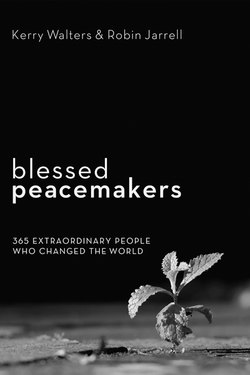Читать книгу Blessed Peacemakers - Robin Jarrell - Страница 78
На сайте Литреса книга снята с продажи.
15 March SuAnne Big Crow
Оглавление15 March 1975—9 February 1992
Happytown
The 3,500-square-mile Pine Ridge Oglala Sioux Reservation in South Dakota is the largest and poorest Indian reservation in the United States. Half of its nearly thirty thousand residents live below the national poverty level, with unemployment at around 85 percent. Scores of homes are without electricity and plumbing. The life expectancy, forty-seven years for men and fifty-two for women, is the shortest in the entire Western Hemisphere. As if the living conditions aren’t bad enough, the Sioux who live at Pine Ridge regularly endure local racism and federal indifference. Tussles between whites and Indians aren’t uncommon.
But in 1987, a thirteen-year-old girl named SuAnne Big Crow demonstrated another way of dealing with the hostility directed at her and her people. She did it at a high school basketball game between the girls of Pine Ridge and Leads, a mostly white town about one hundred miles north of the reservation.
The Pine Ridge team traveled to Leads for the game. Although memories of what happened are mixed, the standard version is that fans on the Leads side of the gym began hurling racial epithets the moment the Pine Ridge team walked onto the court. Some hollered “Squaw!” and “Gut-eater!” and the Leads school band started thumping out a fake Indian drumbeat.
Then the unexpected happened, one of those breaks with convention that can defuse violent situations. SuAnne, a member of the Pine Ridge team, took off her warm-up jacket, draped it over her shoulders, and began a Sioux shawl dance while chanting a traditional song. The gym went silent. When she finished the dance, SuAnne grabbed a ball, dribbled to a hoop, and shot a basket. The gym roared with approval.
Even though parts of the story may be mythic, the whole perfectly fits SuAnne Big Crow’s character. As a teenager, she toured the reservation and then the country encouraging Native Americans to avoid the use of drugs and alcohol. She was an outspoken critic of bigotry but always sought to reconcile with racists rather than condemn them. She dreamt of a youth center at Pine Ridge, a place she called “Happytown,” where Sioux kids could gather for recreation and self-improvement. And along the way, she became a basketball star who set several athletic records while graduating at the top of her class. She was the pride of her community, and her people were crushed when she was killed in a car accident at the age of seventeen. Her funeral procession was six miles long.
But SuAnne’s spirit of creative reconciliation remains a living memory at Pine Ridge. Admirers collected funds after her death to build what’s now called the SuAnne Big Crow Boys and Girls Club. The Club serves twenty-six hundred reservation youngsters. Its facilities include a restaurant named “Happytown.”
